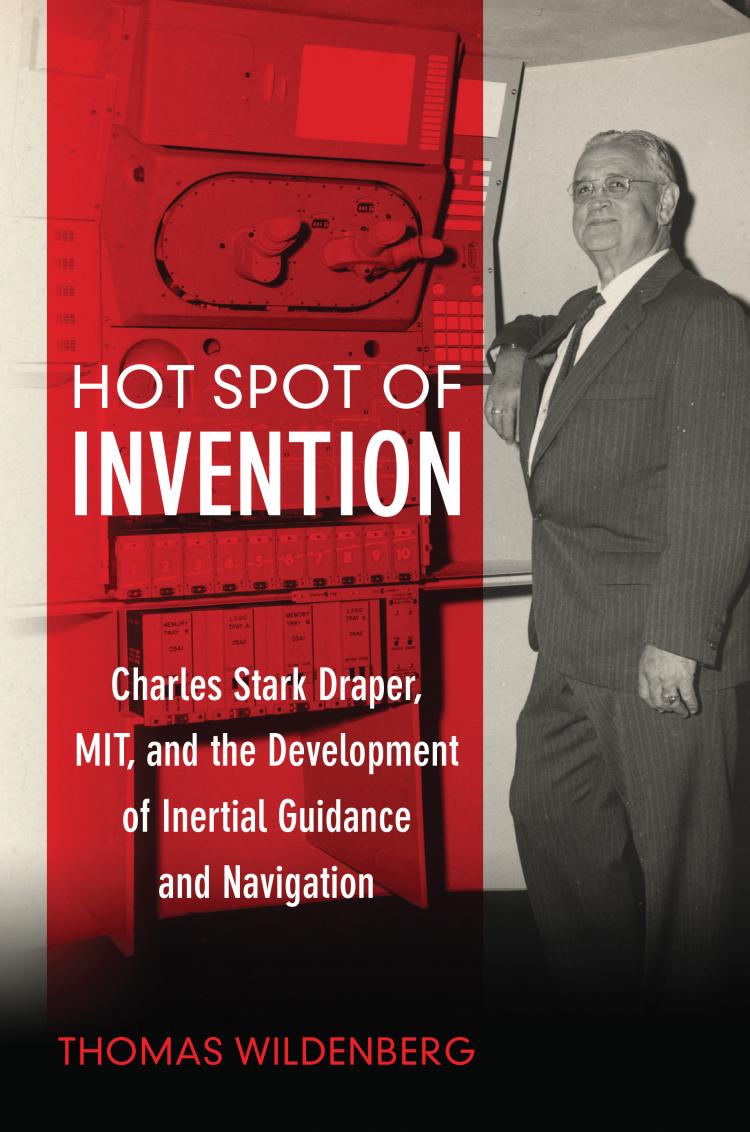Hot Spot of Invention
"Charles Stark Draper, MIT, and the Development of Inertial Guidance and Navigation"
- Subject: Clear the Decks Up to 80% OFF
- Format:
Hardcover
- Pages:
320pages
- Published:
November 15, 2019
- ISBN-10:
1682474690
- ISBN-13:
9781682474693
- Product Dimensions:
9 × 6 × 1 in
- Product Weight:
22 oz
Hardcover $10.40
Overview
Charles Stark Draper, often referred to as “The Father of Inertial Navigation,” was the moving force behind the development of the floated gyroscope in the United States. Engineer, scientist, inventor, inspiring teacher, and dynamic leader, Draper founded the laboratory that brought inertial navigation to fruition for operational use in submarines, aircraft, and space vehicles. These factors alone make him worthy of study. But Draper also created and ran the famous laboratory, now bearing his name, that helped make MIT into one of the nation’s leading centers for government research. The story of his life and accomplishments cannot be separated from those of the Instrumentation Laboratory, which are one and the same. Thus, this biography of Charles Stark “Doc” Draper, is also a chronological accounting of the MIT Instrumentation Laboratory and its contributions to the nation.
About the Author
Editorial Reviews
"Thomas Wildenberg’s biography of Charles Stark Draper—the first ever undertaken—is an excellent introduction to the life of a pugnacious and astonishing inventor-entrepreneur-educator who pioneered technologies that influenced modern navigation and national defense as well as helped land humans on the moon." —Deborah Douglas, director of collections and curator of science and technology, MIT Museum
“In Hot Spot of Invention, Thomas Wildenberg expertly mixes the personal and the technical to bring the life of Charles Stark Draper, who taught most of the great vehicles of the 20th century – sea, air, and space – where they were and where to go, into vivid focus.” —Brent D. Ziarnick, Airpower Department Deputy Chairman, Air Command and Staff College
“Hot Spot of Invention provides an engineers’-eye view of the stream of technological military wonders, from lead-control gunsights to inertial guidance systems, that emerged from Charles Stark Draper’s Instrumentation Laboratory at MIT.” —Audra Wolfe, author of Freedom's Laboratory: The Cold War Struggle for the Soul of Science
"Wildenberg yanks Charles Stark Draper out of the scientific shadows with his usual deft writing in this easy to read narrative. Draper, an inventor and scientist of the caliber of Edison or Tesla, emerges as a technological wizard who literally positions America for victory in the Cold War and beyond." —John Terino, Chairman, Department of Airpower, USAF Air Command and Staff College
“Hot Spot of Invention delivers a fascinating study of a protean engineer. It captures the spirit of engineering from the 1930s through the 1970s, highlighting one of its most influential engineers.” —The Daily News
“Wildenberg is an independent historian and scholar whose special interests include naval aviation and technological innovation in the military. He does an amazing job of showing how Charles Stark Draper’s extraordinary talent for applying science to engineering was supported by MIT, to the extent that the laboratory that would one day bear Draper’s name became a centre of innovation – a hot spot of invention – that attracted high-profile government research projects. Build the right kind of incubation environment, and they will come. The book’s thorough attention to the intertwined story of Draper and the MIT Instrumentation Laboratory is itself supported by a helpful glossary, an index, and extensive endnotes and source material citations.” —Maritime Engineering Journal
“This is a well-written and researched book…. The book can be used as a basis and source for both technical research and historical investigation. It is also an enthralling read and [it’s] recommend.” —Aerospace
“Hot Spot of Invention is a superb study of an engineer and leader. It captures the spirit of engineering from the 1930s through the 1970s while focusing on one of the period’s most influential practitioners. A fascinating read.” —Air Power History





